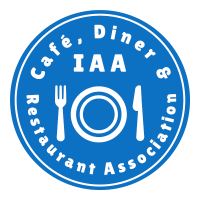On March 14, following a phone call from his frustrated police chief, Hoboken, N.J. Mayor Ravi Bhalla limited restaurants and bars in his city to takeout and delivery.
In the process, Bhalla lit a match that started a fire that would engulf much of the restaurant industry. Within a few days, just about every state in the nation would take a similar step in the name of fending off a rapidly spreading coronavirus pandemic that has gone on to kill more than 300,000 Americans.
As we look back on 2020 and pick its top stories, there really isn’t a question of which story was biggest.
In the restaurant industry, the coronavirus and state and federal efforts to limit its spread was the story, a historic moment unlike anyone has seen, one that seems certain to influence the business like nothing else that had come before.
From that moment on, everything operators would do during the course of 2020 would be done under the influence of a pandemic. And everything beforehand just seems so long ago, as if it was in another era altogether. Because, frankly, it was.
The pandemic and the shutdowns of dine-in service reset the restaurant industry. It would force operators to adapt to a takeout-only climate on the fly, with makeshift drive-thrus and curbside service using folding tables and handmade signs. Plexiglass would become as common as the POS, hand sanitizer as valuable as saffron and much harder to get.
Consider the impact of those two weeks in March. By the end of that month some 6 million restaurant workers would lose their jobs, according to federal data. The industry employment in April, 6.3 million, was at the lowest point dating back to at least 1990. Those few days, in other words, wiped out more than three decades’ worth of job creation.
Between February and April, industry would lose more than half of its sales, plunging by $35 billion.
Even now, following a summer of recovery, the industry remains $10 billion in monthly sales short of where it was in February. The National Restaurant Association estimates that the pandemic will cost the industry $240 billion.
That kind of sales plunge has decimated the industry. Dozens of restaurant chains have declared bankruptcy, including major chains like Ruby Tuesday, California Pizza Kitchen and Chuck E. Cheese.
As many as 10% of all restaurant locations will shutter permanently because of the pandemic, including everything from mom-and-pop diners to landmark restaurants such as the 157-year-old Cliff House in San Francisco, a restaurant started during the Civil War and which survived the Great Depression.
Closures also included some entire restaurant chains. Souplantation and Sweet Tomatoes, a health-focused buffet concept, opted to declare Chapter 7 after deciding it could not survive without the return of dine-in service. It was a rare complete shutdown of an entire restaurant chain.
At the same time, customers ordered delivery by the bunch, sending sales at Papa John’s and Domino’s skyrocketing while fueling such strong growth at third-party delivery company DoorDash that it would become one of the year’s hottest IPOs earlier this month. Customers flocked to Mexican chains on Cinco de Mayo and waited in long lines for takeout on Mother’s Day. Casual-dining chains found their takeout footing, which many managing to survive during the quarantine’s long months with to-go options created on the fly.
Restaurant chains quickly deployed online ordering and inked deals with multiple delivery providers. They also started redesigning restaurants, testing new technologies and seatless restaurants to adapt to a new reality.
The drive-thru has become the hottest area for innovation, as all sorts of chains added drive-thrus or new drive-thru lanes and found new technologies such as artificial intelligence to improve service. Customers, eager for restaurant food and a break from the quarantine monotony, have waited for long periods of time in drive-thru lanes—resulting in at least one lawsuit over such lines at an Ohio Chick-fil-A.
Many restaurants found new methods for outdoor dining. They also found new efficiencies, cutting menu items to improve speed. Fast-food chains kept their dining rooms closed altogether, opting for the ease of operations that comes with serving customers through a single window.
It remains to be seen what the restaurant industry will look like coming out of the quarantine. But few disagree with the statement: This singular event has altered the industry’s course for good.



